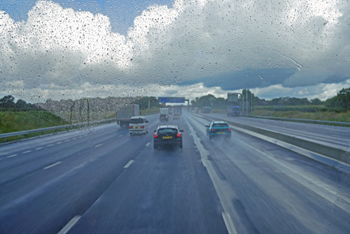National Standards Body BSI has published the first taxonomy for specifying the conditions in which an automated vehicle has been designed to function.
The free-to-download standard, PAS 1883 Operational Design Domain (ODD) Taxonomy for Automated Driving Systems (ADS) – Specification, provides a common taxonomy for describing the ODD of an automated driving system, including types of roads, traffic and weather.
BSI said PAS 1883 will help organisations trialling and testing automated vehicles to describe their vehicles' capabilities in a reliable and accurate way.
The aim is to enable safe automated driving and allow developers of CAV technologies to communicate the capabilities of their vehicles clearly and consistently to road authorities, insurers and consumers.
The new standard is the third publication from the CAV Standards Programme, backed by the Government’s Centre for Connected and Autonomous Vehicles (CCAV) and delivered in conjunction with the Department for Transport, Innovate UK and Zenzic.
Nick Fleming, head of mobility and transport standards at BSI, said: ‘Standardization provides the opportunity for emerging industries to come together to develop common languages that will help grow confidence, awareness and collaboration.’
Iain Forbes, head of the CCAV, said: ‘None of the benefits of connected and self-driving vehicle technology will be realised without public confidence that connected and self-driving technology is safe and secure.
‘That is why BSI's CAV Standards Programme is so important to the world-class work CCAV is leading on assurance, with PAS 1883 in particular supporting better communication and collaboration within the sector to enable even safer trialling and deployment of the technology.’
BSI said the standard has been produced by a steering group of technical experts made-up of organisations from ‘the UK CAV eco-system’, including automated vehicle developers, testbeds, road authorities and with WMG, the University of Warwick acting as technical author.
It is intended to be used alongside other BSI standards developed to support CAV trialling and testing, such as PAS 1881 Assuring the Safety of Automated Vehicle Trials and Testing – Specification and is helping to inform the development of a related international (ISO) standards on the topic.
New lane keeping regulation

Automated vehicles will need to cope with British weather
The move follows the adoption by 60 countries, including the UK, of a new regulation on Automated Lane Keeping Systems (ALKS) through the United Nations Economic Commission for Europe World Forum for Harmonization of Vehicle Regulations.
The new Regulation is the first binding international regulation on 'level 3' vehicle automation and will come into force in January 2021.
In its current form, the regulation limits the operational speed of ALKS systems to a maximum of 60km/h.
It requires that on-board displays used by the driver for activities other than driving when the ALKS is activated shall be automatically suspended as soon as the system issues a transition demand, for instance in advance of the end of an authorized road section.
The regulation also lays down requirements on how the driving task shall be safely handed back from the ALKS to the driver, including the capability for the vehicle to come to a stop in case the driver does not reply appropriately.
Rob Capaldi, commercial manager for connected and autonomous vehicles at HORIBA MIRA, said: 'As the first international regulation for level 3 vehicle automation features, the new UN regulations on ALKS are a major step forward in paving the way for the future generations of automated vehicles.
'For example, if a vehicle is travelling at 60km/h and it encounters a hazard, the vehicle maker must define and test the safest action available.
'This requires a fresh perspective as there is not always one single response to emergency manoeuvres – and they must ensure the vehicle can automatically react to the situation and make an appropriate decision to control the outcome of the scenario.'